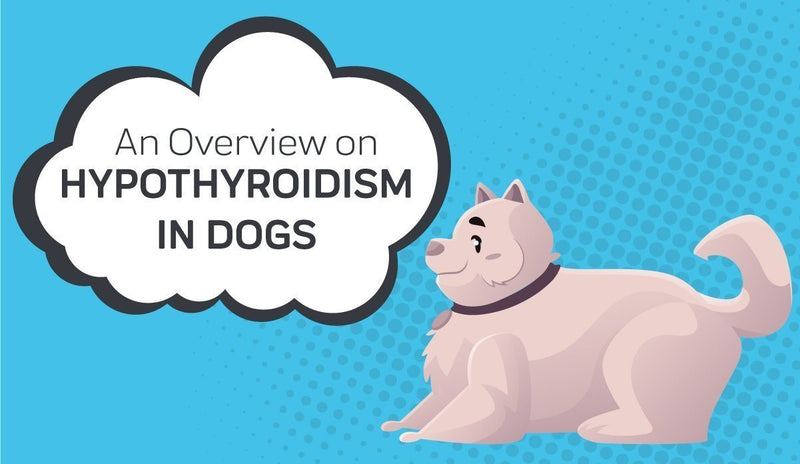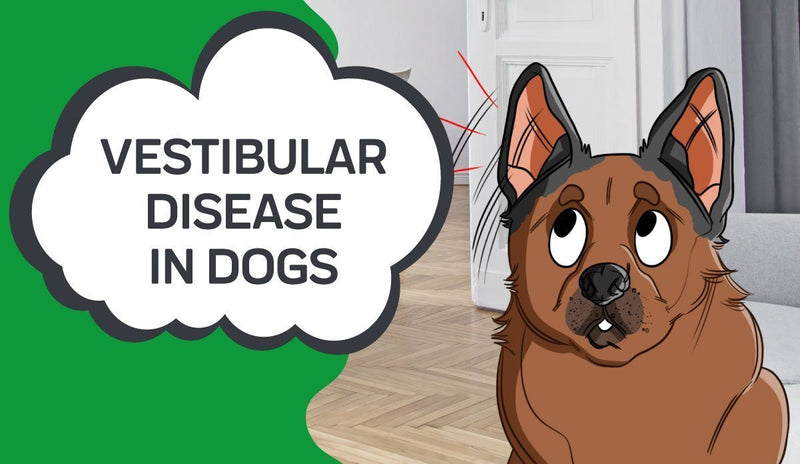- The Definition of Diabetes in Cats
- The Two Types of Feline Diabetes
- Symptoms of Diabetes in Cats
- How to Tell If Your Cat Has Diabetes
- Treating Diabetes in Felines
- Where to Purchase Feline CBD

Like people, cats are susceptible to a health condition known as diabetes. Roughly one hundred million people have diabetes, and that's in the United States alone. There are various situations that cause diabetes in the body, but for now, we are going to focus more on how diabetes affects cats and how you should go about helping a cat with diabetes.
Diabetes Mellitus in cats is not as uncommon as you may think. In fact, approximately 2% of all cats have feline diabetes. The percentage is small but when you think about it, there are roughly six hundred million cats in the world, which equates to an estimated twelve million cats that have diabetes. When put into perspective, it is easier to realize that 2% of cats with diabetes is an incredibly high number of cats.
But what exactly is diabetes? And how does it impact the lives of cats that have the condition? Let’s define diabetes in cats, and then we’ll talk about the implications and symptoms of feline diabetes.
The Definition of Diabetes in Cats
Diabetes is defined by the Centers for Disease Control and Prevention as a health condition denoted by improper processing and use of insulin in the body. Insulin is a main factor from the consumption of carbohydrates, and it is completely natural to produce a decent amount of insulin on a daily basis.
But the problem arises when the body does not take insulin and store it in the appropriate place, this is called insulin resistance. In the body, insulin is derived from the pancreas, which is an internal organ situated very close to the stomach. The pancreas produces insulin at normal and regulated rates in the bodies of healthy cats, but sometimes, the body struggles to produce insulin on its own.
Other times, the body has a hard time regulating insulin that comes from food sources. The latter two examples are indicative of type I and type II diabetes, respectively. When your body improperly regulates insulin, there is an absurd concentration of sugar in the bloodstream, and this leads to an imbalance in the blood glucose levels in your cat's body.
Sometimes diabetes arises from variables in the environment, like a virus that is circulating and causing damage to the beta cells that produce insulin in the bodies of cats. Other times, diabetes has nothing to do with external factors, but rather, the diabetes stems from their genetic makeup.
This is probably the most unfortunate way of developing diabetes because there aren't any preventative measures that you can take. Not all cats with genes that lead to diabetes actually develop the health condition if the genes are not triggered or if they are recessive to the point of staying benign. No matter what causes diabetes, the most important part is to be proactive and learn about how to move on from there.
Your cat can still lead a fulfilling and active life while being diabetic, especially if you do your very best as a pet owner and help your feline friend stay as healthy as possible!
The Two Types of Feline Diabetes
Diabetes has everything to do with the levels of insulin that your cat does -- or does not -- produce on its own. Insulin is a naturally-occurring hormone in the body and it enables the body to break down carbohydrates.
Often shortened to carbs, carbohydrates are the main source of energy for any moving body. While a select few are able to survive off of a low carbohydrate diet, high-fat nutrition intake, the majority of people and animals thrive best when more carbohydrates than fats are being consumed.
But this can be dangerous for some cats when their bodies are either receiving too many carbohydrates for comfort, or when the carbohydrate count is fine but the insulin levels are not adequate enough to compensate for the amount of sugar entering the body. Situations like this are signs of diabetes.
For people and cats alike, diabetes presents itself in two ways. Diabetes is categorized in two ways, and the diagnosis is based on how your cat’s body relates to the insulin being released throughout. Once diagnosed with diabetes, your cat will either be categorized as Type I or Type II.
The differences between Type I and Type II is related to the severity of the condition. For diabetic cats, Type I is far worse than Type II. The main cause of Type I diabetes is that your cat's body is not receiving enough insulin, and subsequently, your cat's body is low blood glucose levels or low blood sugar.
While it is important that you regulate your cat's sugar intake, there is a happy medium that your cat's body needs to maintain. With low blood sugar, your cat will feel lightheaded, shaky, and not at his or her normal energy levels. Your cat's vet will recommend that insulin therapy shots become part of your cat's daily routine, and the shots will bring your cat's insulin levels back up over time.
Symptoms of Diabetes in Cats
Feline Diabetes is often present before you are even aware that it's a problem. The symptoms of diabetic cats stay dormant and relatively undetectable for a little while, but when they do start to surface the symptoms of cats with diabetes will show clinical signs listed below.
Symptoms of Diabetes Mellitus you should be on the lookout for:
How to Tell If Your Cat Has Diabetes
The only way you can know for sure that your cat has diabetes is by taking your feline to the vet. As with nearly every medical condition known to man, diabetes has symptoms that are very similar to those of other health concerns and illnesses.
A veterinarian can take blood samples and have tests run by a lab as a way of determining the blood sugar level of your cat. There is more to diagnosing a cat than simply identifying the symptoms and seeing if they align with diabetes, especially when the symptoms of diabetes include such vague side effects like depression, nausea, and lethargy, to name a few.
If you suspect your cat might have diabetes, that’s very intuitive and it’s totally fine to bring your concerns to the veterinarian. But we encourage you to not take any steps regarding treatment of diabetes until your cat’s vet determines that diabetes is the issue and advises you on what to do next. We know your heart is in the right place, but if you act on symptoms and treat them like they are resulting from diabetes when they aren’t, you could potentially cause harm to your cat.
Once you schedule the appointment and take your cat to the vet, you will receive instructions on how to treat diabetes cat symptoms. If your cat has Type I diabetes and you are sent home with insulin shots, pay close attention to the directions. It can be scary to poke your cat with insulin shots but just remember that you are doing something that will make your cat feel better over time, and on top of that, as long as you adhere to the instructions, nothing can really go wrong.
Insulin shots are only one of many treatment options for feline diabetes symptoms. Let’s explore the different forms of treatment for symptoms of feline diabetes.
Treating Diabetes in Felines
Adjusting Your Cats Nutrition and Dietary Intake
Before you add anything into your diabetic cat's life, it is actually wiser to take a few things away. Your cat's diet is a main player in a diabetes diagnosis. The nutritional content of the foods that your cat is consuming might be affecting the insulin production and concentration in your cat's system.
Sometimes, cats eat foods that amount to more calories than they burn, and as a result, they gain weight. Over time, consistent weight gain will lead to obesity in cats, and with obesity comes a resistance to insulin. There is a high probability that your cat is simply consuming far more calories than his or her body needs to survive, so your veterinarian might prescribe nothing more than a caloric deficit.
Weight loss is a slow-moving process, but try your best not to worry if your cat isn't losing noticeable weight at the beginning. It is healthy to lose weight slowly, not to mention more sustainable and safer. And cats with diabetes might not even need to lose pound after pound before they experience an adjustment with their insulin levels.
Sometimes, a few pounds is all it takes to offset the body's regulation of insulin, so trust your cat's vet if they mention a weight loss program. The two types of diets that vets place diabetic cats on are a low carb diet or a high complex carb diet, which tends to go hand-in-hand with higher levels of fiber in the diet.
Insulin for Cats with Diabetes
Once diets are adjusted, insulin therapy is used as the next step in the process of treating feline diabetes. The typical treatment plan is for a cat to receive insulin injections twice a day, but the actual dose of insulin will depend on your cat's specific situation. The same goes for doses and the time of day that your cat's vet will suggest you administer injections to your cat.
Your vet can guide you through the process and give you tips on how to successfully administer insulin injections to your kitty, so don't hesitate to ask for guidance or to have your questions answered. Veterinarians know that not many pet parents are comfortable with the idea of injecting needles of insulin into their pets, so they can be there for you every step of the way.
Oral Medicine for Diabetic Cats

If dietary adjustments are not enough to reverse the onset of diabetes, then your cat's veterinarian may prescribe an oral medication for your feline friend. The purpose of oral medicine is to stop the body from being so resistant and tolerant to insulin in the blood.
By lowering the levels of insulin resistance, your cat's body will be able to properly regulate insulin again. You can keep tabs on the medication and figure out if it is working properly by checking your cat's insulin levels every now and again. Medication is more hands-on than any other type of diabetes treatment method because you constantly have to measure your cat's blood sugar levels.
On top of having to monitor your pet's blood sugar ratios, you also have to force your cat to swallow medicine every day. This treatment option is certainly not the preferred method, but it is nice to know that it is an option if the other treatment methods don't end up working.
CBD for Diabetes in Feline Friends
Diabetes is not a curable condition. As long as your cat’s health remains a top priority, you shouldn’t have to worry about anything becoming fatal. Diabetes is a health issue that cats can live with quite comfortably. Of course, their symptoms will change their lives to a certain degree, but it’s nothing that you and your cat’s vets cannot control.
Since you cannot get rid of the insulin-dependent condition, you might as well seek out solutions that make pain management simpler and more efficient. One of the most helpful supplements you can add into your diabetic cat’s lifestyle. The health benefits of CBD on its own are impeccable, and when cannabidiol is paired with a cat that has diabetes, the improvements you’ll see in your cat might just blow your mind.
Keeping an Eye on Cats with Diabetes
The most important step that you can take as the parent of a cat with diabetes is to constantly keep an eye on them. The reason for monitoring your cat's movements is so you can control how much water, food, and exercise that they receive daily.
Also, since diabetes affects your cat's urinary tract and the frequency at which they need to use the bathroom, taking the time to count how often your diabetic cat urinates will help you figure out if your cat is making progress. If you have to leave the house during the daytime, and your cat ends up spending a while on their own, you might even want to consider installing a camera to monitor your cat throughout the day.
Getting your cat accustomed to eating at the same time every day, if they are not already on a schedule, will help you stay on track with monitoring your cat's behavior, too!
Where to Purchase Feline CBD
The most common form of CBD for pets is cannabidiol oil. Safe for dogs and cats alike, cannabidiol oil from Innovet is a dietary supplement that delivers about one hundred twenty-five milligrams of CBD per thirty milliliters of oil. This is only one of five options regarding CBD potency and quantity. Innovet also offers containers of 250mg CBD, 750mg CBD, and 1,500mg CBD, as well as a CBD oil that contains only cannabidiol derived from hemp plants, not cannabis.

The hemp extracts originate in the state of Oregon, and hemp oils used in Innovet pet products are European-based. By using the cold CO2 extraction method for processing their full-spectrum CBD oil, you can rest assured that CBD for cats is as pure as CBD can be. Innovet swears by the promise to only offer CBD oil that is natural in every way, shape, and form. There are no pesticides, contaminants, preservatives, chemicals, or anything of this nature in the CBD itself, nor do the hemp or cannabis plants come into contact with dangerous substances either. The price point of CBD oil from Innovet for diabetic cats is very affordable, and if anything, it falls on the lower end of the spectrum when compared to companies that offer similar products. Made with organic phytocannabinoids, the CBD from Innovet is sourced from the US state of Colorado. The quality control is above and beyond, with every ounce of CBD oil checked by third party labs that ensure everything is labeled and dosed correctly.
Cannabidiol oil varies in tincture, so if you haven't ever administered CBD to your cat with diabetes before, start out with 125mg and adjust accordingly from there. Whether you choose CBD from cannabis with minimal THC, or pure CBD in isolate form, which is derived from hemp plants, your cat will be safe with CBD in his or her system.
Even if you elect to order full-spectrum CBD, your cat will never feel high. CBD does not cause mind-bending or perception-altering effects like all cannabis products are thought of as doing. THC is the cannabinoid responsible for these effects, and with that information, you may be wondering why CBD for cats contains any THC at all. Well, as long as the THC concentration is below the legal limit of 0.03% then the THC actually enhances the effects of CBD without contributing any psychoactive effects.
Innovet offers other CBD products as well, so you don’t necessarily have to stick to CBD oils for cats with diabetes. Check out the inventory available at Innovet. CBD snacks, treats, capsules, and lotions for cats in need of pain and inflammation relief as a result of their diabetes. Your cat doesn’t have to be uncomfortable! Let CBD work its magic today.
Sources:
Diabetes In Cats: Symptoms, Treatments, Prevention, and Diet Tips
Managing Treatment of Diabetes Mellitus in Your Cat
Plant-Derived Cannabinoids in Diabetes and Diabetic Complications
Approved by:
Dr. Sara Ochoa
Doctor of Veterinary Medicine, St. Georges University

Thanks for stopping by!
P.S. We Love You!
Sincerely,
The Innovet Team
Please do not ask for emergency or specific medical questions about your pets in the comments. Innovet Pet Products is unable to provide you with specific medical advice or counseling. A detailed physical exam, patient history, and an established veterinarian are required to provide specific medical advice. If you are worried that your pet requires emergency attention or if you have specific medical questions related to your pet’s current or chronic health conditions, please contact or visit your local/preferred veterinarian, an animal-specific poison control hotline, or your local emergency veterinary care center.
Please share your experiences and stories, your opinions and feedback about this blog, or what you've learned that you'd like to share with others.
















